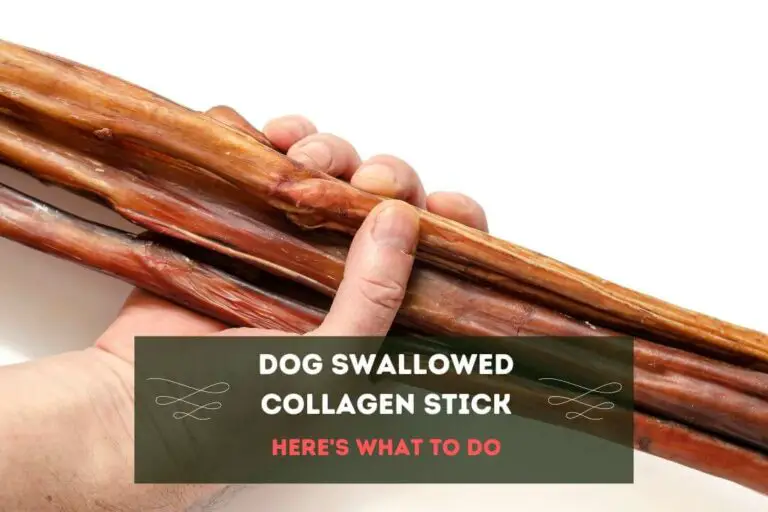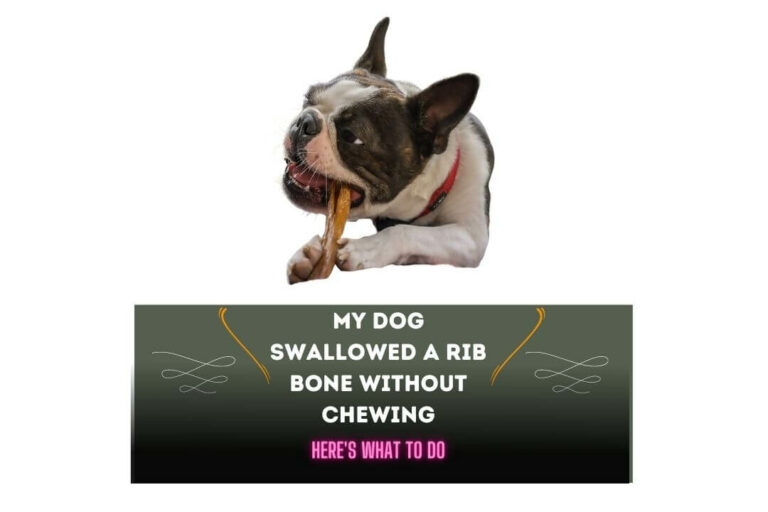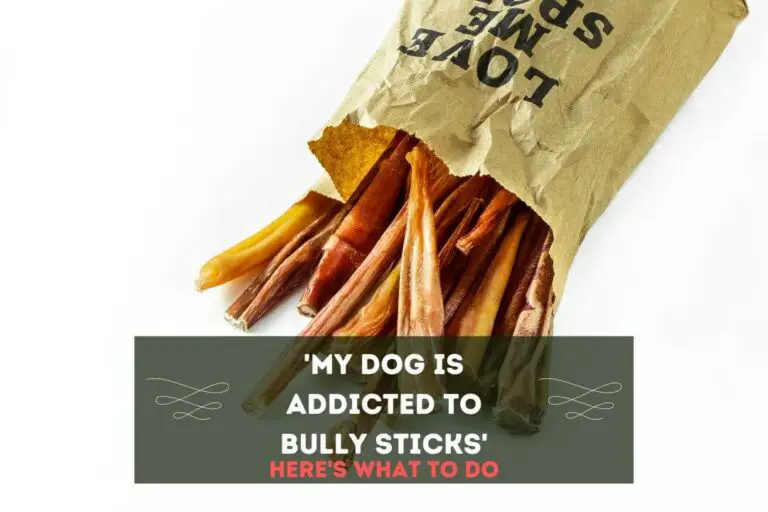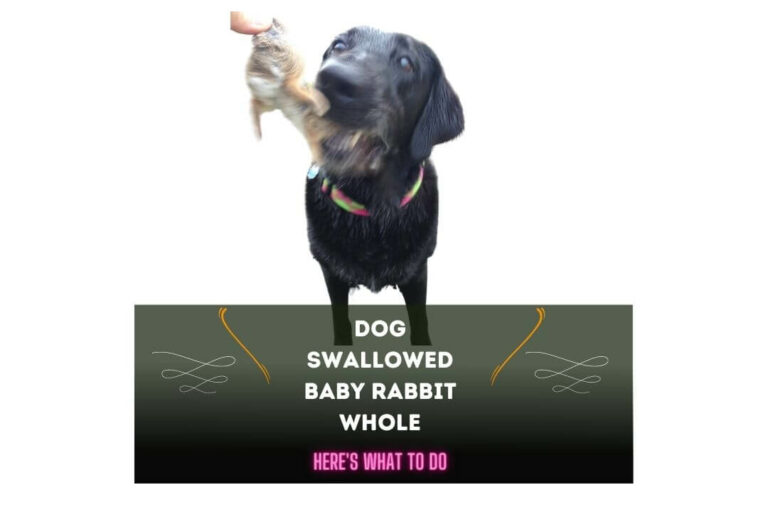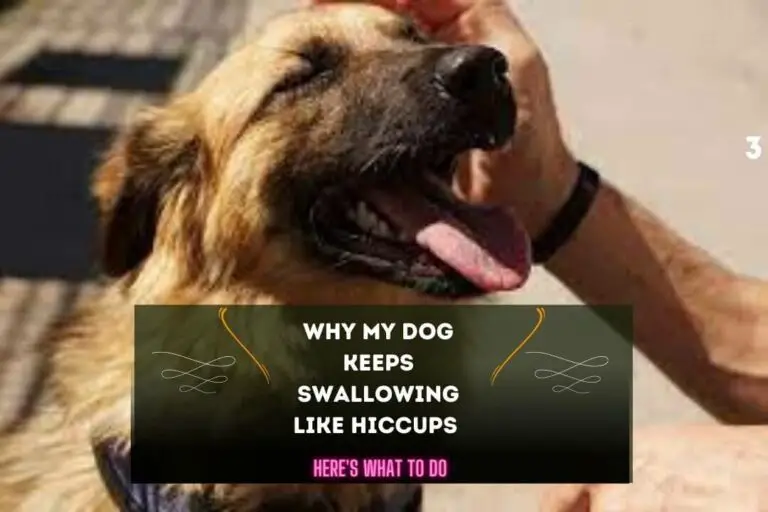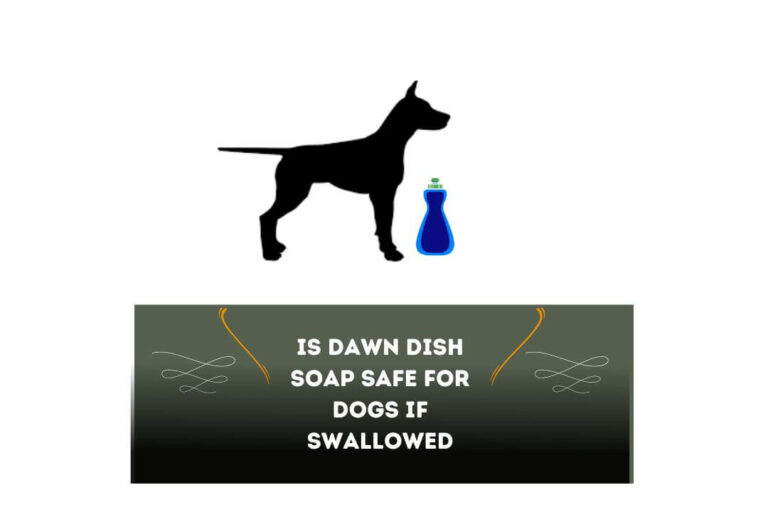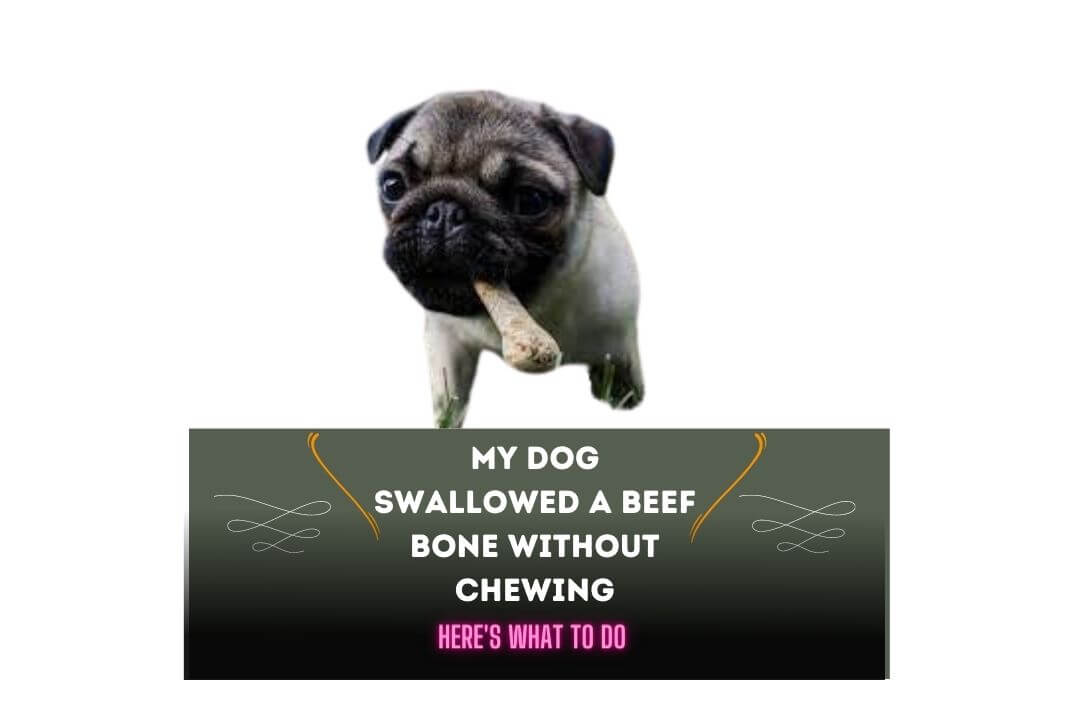
If you want to know what to do if “My Dog Swallowed a Beef Bone Without Chewing”, this is As per a recent study published in the Journal of the American Veterinary Medical Association (JAVMA), bone-related incidents accounted for approximately 12% of all emergency clinic visits.
Surprisingly, Of those incidents, 80% were due to dogs swallowing bones. Hence, If you’re also wondering what to do if ‘your dog swallowed a beef bone without chewing,’ this article is for you.
You must understand the potential risk and take preventive measures to keep your dog safe and healthy. I understand how frightening an experience it can be to see your Furry friends Swallowing a beef bone without chewing it.
Hence, knowing the symptoms of a Swallowed bone and the risk involved is necessary to take actionable approaches. In this article, we will discuss what you should be doing and advise how to prevent your dog from Swallowing any bones without chewing them in the first place.
Lastly, I will also give you some helpful tips that can keep your dog healthy & safe for longevity. First, let’s begin with knowing the symptoms of a dog swallowing beef bone without chewing it.
5 Symptoms of Swallowed Beef Bone
If you want to know whether your dog swallowed a beef bone without chewing it, here are five symptoms you should look out for.
- Difficulty swallowing
- Vomiting
- Gagging or retching
- Pain or discomfort in the abdomen
- Changes in appetite or thirst
Note: the symptoms don’t need to occur immediately after your dog swallows a bone without chewing it. Sometimes it can also take a few hours and even days to develop. Therefore if you are confident that your dog has swallowed a beef bone without chewing it, you should consider taking it to the nearest veterinarian clinic for a proper diagnosis.
3 Risks of Swallowed Beef Bone
It would help if you acted promptly because dogs swallowing any bone without chewing can pose a serious risk to their health and well-being. Below are 3 of the most common issues you are likely to notice in your dog if it has swallowed a whole bone without chewing.
- Obstruction Of The Digestive Tract: There is always the risk of obstruction in your dog’s digestive tract when it chews its food properly and gobbles it immediately. If your dog has accidentally swallowed a beef bone without giving it a proper chew, it may get stuck in its esophagus, stomach, or intestines. This happened with me too when My Dog Swallowed A Rib Bone Without Chewing. If you don’t act promptly and take your dog to the nearest vet clinic, it may cause a blockage that can be life-threatening.
- Perforation Or Blockage In The Intestines: Since your dog hasn’t chewed the bone properly before swallowing it, its sharp edges can also cause tears or punctures in its intestines, leading to infections or other complications.
- Peritonitis: A ruptured intestine can quickly cause an infection in the lining of your dog’s abdomen, potentially leading to severe illness. In some cases, it can even lead to sudden death.
What to Do if My Dog Swallowed a Beef Bone Without Chewing
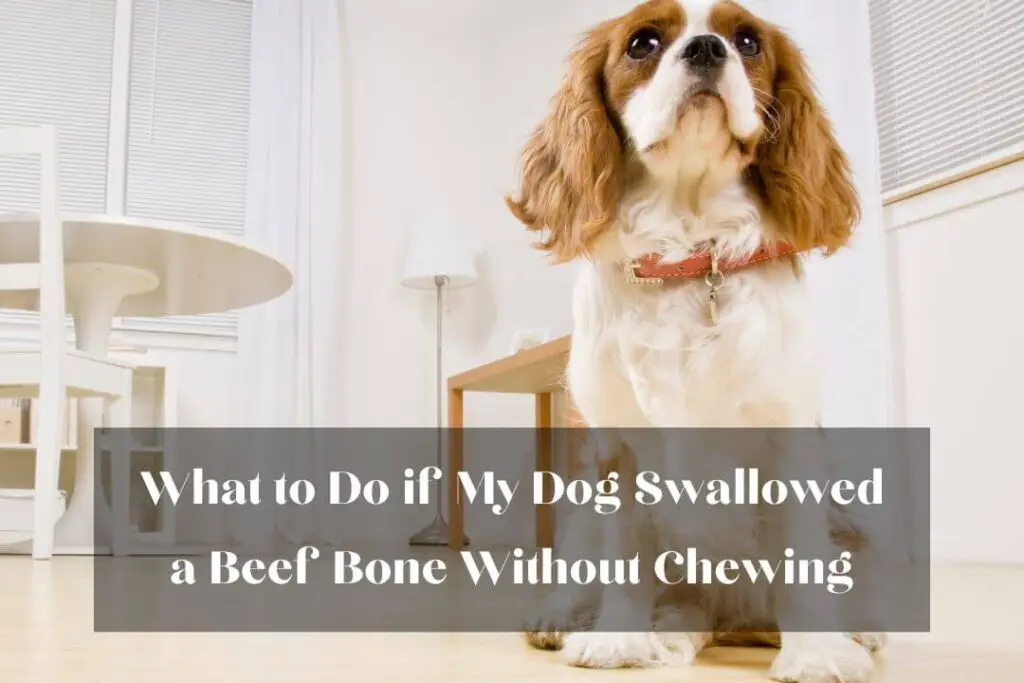
Don’t Induce Vomiting
It would help if you never attempted to force your dog to induce vomiting to get the bone out of its system. No matter how tempted you feel to induce vomiting, if your dog has swallowed a bone, inducing vomiting will make the situation worse or even deadly.
It can further cause the object to become lodged in your dog’s esophagus. It’s better to take your dog to the vet clinic and let the professional handle this situation for you and your dog’s well-being.
Monitor for Symptoms
The symptoms that I have given you in the above section are the ones your dog will likely exhibit if it has solved a bone without giving it a proper chew. Therefore, you must consider monitoring your dog closely for a few hours to identify signs of distress like vomiting, diarrhea, abdominal pain, or constipation. If you notice any of these symptoms, take your dog to the vet immediately.
Contact a Vet
If you notice any symptoms, you should contact your veterinarian as soon as possible to let them know what happened. They are professionals who can advise you on the best course of action based on your dog’s overall health status, size, and age.
On the other hand, if your veterinarian is unavailable or you can’t reach your vet via call, you should consider taking your dog to the nearest veterinarian for a proper diagnosis.
Give a Small Meal
Depending upon the severity of the issue, your veterinarian may advise you to offer your dog a small meal or a small portion of their meal to help cushion the bone. Also, it helps in preventing it from causing any further damage as it moves through your dog’s digestive system.
Administer Medication Prescribed by the Vet
Your vet will likely prescribe you some medication that can help your dog pass the beef bone quickly. They may also give you medication to prevent any infection from developing in the abdomen due to ruptured intestine/tears or punctures in their intestine.
Therefore, you must administer your vet’s prescribed medication exactly as directed and follow your veterinarian’s instructions to ensure the best possible outcomes for your furry friend.
People Also Ask: Is Dawn Dish Soap Safe for Dogs if Swallowed?
5 Treatment Options Your Vet May Recommend
Physical Examination
To determine the severity of the situation, a veterinarian will likely do some physical examination. A physical examination will help your veterinarian assess the severity of the problem and determine the best course of action for your dog’s well-being.
X-rays or Ultrasound
An ultrasound or x-ray is a must examination that helps locate the bone in your dog’s digestive system. Therefore if your veterinarian recommends an ultrasound or x-ray, never hesitate to go for it, even though it might cost you a bit.
X-rays and ultrasounds are very helpful in locating the bone and determining its actual position in your dog’s system. If the situation worsens, your vet may recommend surgery. Hence, this type of test becomes more important to know the best way to remove the bone via surgery.
Endoscopy
Sometimes a professional vet may also recommend sedating your dog for an endoscopy involving a long, thin tube with a camera on the end to locate and remove the bone. Since this is a minimally invasive procedure, a vet must keep your dog under sedation.
Surgery
As I told you earlier, in severe cases, a professional veterinarian may also recommend removing the bone via surgery, which can be quite costly. Since this procedure is more invasive than an endoscopy test, it is generally done using general anesthesia.
According to a survey by the American Pet Products Association, “the average cost of a surgical procedure for a dog should be in between $2465-$2,945.” You must be aware of the potential financial cost of treatment so that you can plan accordingly.
Hospitalisation for Observation
Sometimes, a small surgery doesn’t require hospitalization, but if your dog’s condition looks very severe, your veterinarian may need to keep it hospitalized for observation. Dogs in severe conditions will need to be monitored by the vet to ensure their condition improves and they are receiving proper care & treatment.
Possible Complications of Medical Intervention
If your dog requires medical intervention, there are always a few possible complications and risks involved that you should be aware of. If your dog is recovering from Swallowing a beef bone without chewing, your dog may experience little risks.
If your veterinarian recommends surgery or endoscopy, there is always a risk associated with anesthesia for your dog. Your dog will take preventive steps to minimize such risks, but you should still be aware of them.
Depending on the severity of your dog’s condition, the recovery process can be lengthy. It may also require ongoing care and attention, meaning hospitalization.
Post-Treatment Care
If you want to help your dog recover faster after it has received proper medical intervention for Swallowing a beef bone without chewing, consider following your vet’s instructions.
Your veterinarian will give you some proper medications & specific instructions that you should follow to care for your dog after the treatment. To ensure a smooth recovery, you not only need to follow the instructions carefully but also make sure to monitor your dog for any further complications.
A study published in the Journal of Small Animal Practice states, “Foreign body ingestion can cause significant damage to a dog’s gastrointestinal tract and may lead to long-term complications such as strictures, chronic diarrhea, and malabsorption.
” As discussed earlier, dogs in recovery can still experience potential complications and risks. Therefore, keeping an eye on your dog and watching for any signs of distress or trouble like vomiting, diarrhea, or loss of appetite will help you act promptly.
Sometimes, a dog also needs some adjustment in their dietary routine. If your vet has recommended any specific adjustment in the diet, like offering small amounts of food for faster digestive system recovery, make sure to adhere to it.
I have seen many vets recommending a blended diet or a special food that eases our dogs’ digestion. If your veterinarian has not recommended such type of food, make sure to ask for it and determine whether it is needed or not.
- Related Issue To Dog Swallowing Behavior
- Dog Swallowed Collagen Stick: Here’s What To Do
- Our Dog Swallowed A Bag Of Scrabble Tiles: What To Do
- Dog Swallowed Skunk Spray: 5 Do’s, 7 Risks, & 3 Prevention Tips
5 Tips for Preventing Your Dog from Swallowing Bones
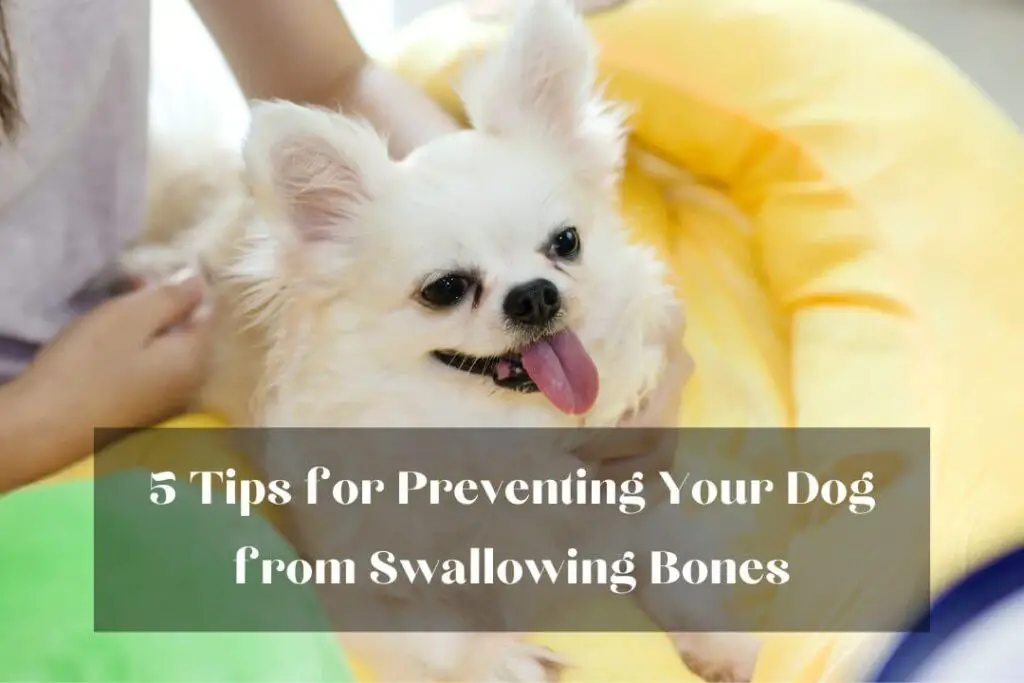
- Avoid Giving Bones To Your Dog: the next time, you should rule out bones from your dog’s dietary routine. No matter how tempted you feel to offer your dog a bone to chew on, it’s never worth the risk. Instead, it would help if you considered providing your dog with some safe chew treats or appropriate toys.
- Offer Safe Alternatives To Bones: if your dog has a habit of chewing on something, you should consider using an alternative to bones. Plenty of safe and healthy alternatives to bones are available in the market for your dog to chew on. One alternative to bones that your dog will love is chew toys made of rubber, nylon, or other materials.
- Teach Your Dog “Leave It” Command: Believe me or not, teaching your dog the “leave it” command can be a lifesaver. I often use this command to prevent my dog from picking up anything that can be dangerous for them. It would help if you also taught your dog’s ‘leave it’ command to prevent it from swallowing dangerous items, including bones.
- Proper Disposal Of Bones: If you are cooking beef meat in your kitchen but don’t know what to do with the bones, make sure to dispose of them properly. It is never recommended to offer anything from your kitchen that may seriously threaten your dog’s well-being and overall health. It’s best to keep the bones out of your dog’s reach by disposing of them in a closed container or trash bag.
If you have bones in your home, it’s important to dispose of them properly. Keep bones out of your dog’s reach, and dispose of them in a secure container or trash bag.
- Educating Children And Visitors: You must educate everyone in your home, including children and visitors, about the dangers of feeding bones to any dogs. It’s always best to let everyone know why bones can be dangerous and potentially deadly for dogs.
Conclusion
After reading this article, I hope you know what to do if your dog swallows a beef bone without chewing it. If you find this article helpful, then consider sharing it. Your share will help many people learn about the proper precautions and steps they should take when they notice their dog exhibiting symptoms of Swallowed bone.
Without contacting your veterinarian, you should never try to do anything that could escalate the problem further and make it more severe. The veterinarians are experts in handling this kind of situation better. Do check our other helpful guide on dog eating problems and their solutions. See you in the next post. Till then, take care and goodbye.

